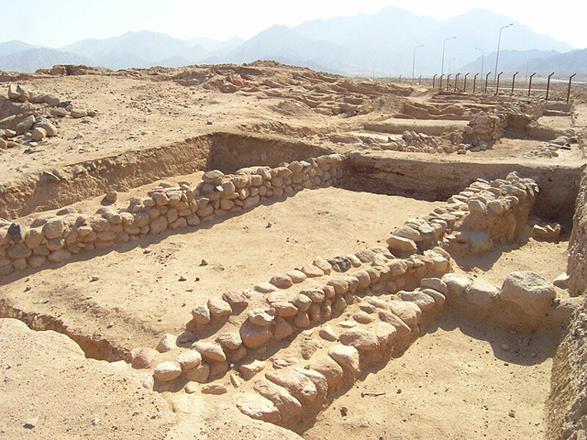
Early Jordanian History Through Jabel Mutawwaq's Pottery
That jar originated from the Chalcolithic period and is decorated with a horizontal line of a type of incisions often associated with pottery of the Wadi Rabah Period, said Eliot Braun, adding that another jar with a wide, flat, hooked knob (not a ledge handle) is adorned with lines of rope-like decoration arranged as if they were used for suspending the vessel.
"That type of decoration is unknown in EB 1 contexts, but has parallels at Ghassul. A jar with wide aperture and splayed rim has similar types of hooked knobs at its waist, possibly intended for suspending the vessel. It also has a short, apparently rope-like appliqué placed horizontally at the level of the knobs," Braun underlined.
He added that another jar with a smaller opening also has short segments of rope-like decoration obliquely positioned at its waist.
In form it is paralleled by a similarly decorated jar from Ghassul. Three similar segments of incised decoration, also obliquely placed, are found on the neck of a jug with a loop handle attached to its rim, Braun noted.
Rope-like decoration of this type, made by rows of shallow, circular (finger-made?) impressions is commonly found in pottery types from Ghassul, and it is known also at Hujayrat Ghuzlan, the scholar said.
The archaeologist added that it contrasts with early EB 1 modes of rope like decorations made by obliquely slashing raised lines of clay.
"Only the jug with its high loop handle and a crude, cup-like bowl with small loop handle from the site seem closer to EB 1 ceramic types. Additional suggestions of the early dating of some pottery types from Jabel Mutawwaq are found in bases with mat impressions unknown in good EB 1 contexts, but common in pre-EB 1 potting traditions," Braun underlined.
He added that the latest of those at Hujayrat Ghuzlan may date to the LC-EB 1 period.
Additional vessels from Jebel Mutawwaq include a spoon, a small fragment of a jar with two vertical lugs common on Chalcolithic type vessels and a vessel with snake decoration, similar to others from Ghassul. Possibly the lack of LC pottery types such as churns and cornets are indicative of an LC-EB 1 date for some phases of occupation at the site.
However, information presently available is too scarce for determining what the extent of such a settlement might have been, Brown underscored.
Regarding dating, radiocarbon dates Jabel Mutawwaq to the end of the Chalcolithic period, sometime early in the fourth millennium BC and the onset of EB 1 sometime around the middle of that millennium.
"It seems pretty clear that there is a zone of transition between LC and what has formerly been designated as early EB 1, which I suggest labeling LC-EB 1. The evidence for Modi'in and Hujayrat Ghuzlan suggests those sites were occupied during that transition period."
"However, the nature of such occupation at both sites remains somewhat obscure as exposures were in the former instance rather limited and in the later, somewhat hard to discern from later occupations," Braun underlined,
The scholar noted that some radiocarbon dates from the Ashqelon Cluster suggest human activity there, and there is no reason to question their inherent veracity.
Furthermore, their associations with specific deposits remain unclear, Braun concluded.

Legal Disclaimer:
MENAFN provides the
information “as is” without warranty of any kind. We do not accept
any responsibility or liability for the accuracy, content, images,
videos, licenses, completeness, legality, or reliability of the information
contained in this article. If you have any complaints or copyright
issues related to this article, kindly contact the provider above.


















Comments
No comment